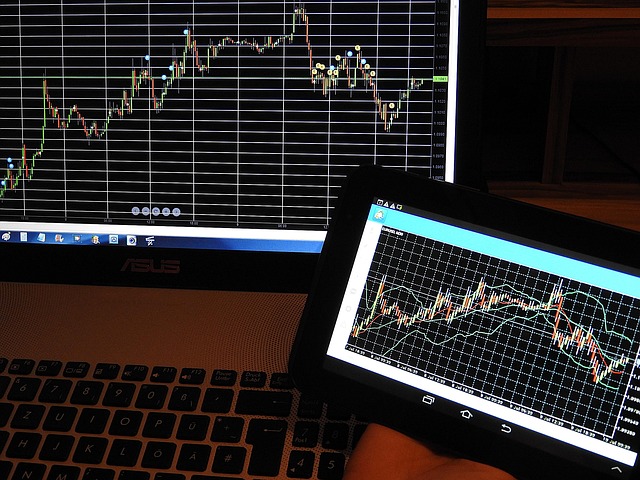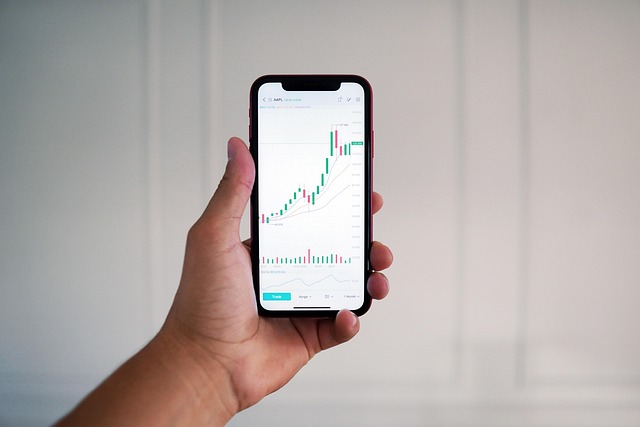Forex Brokers with the Lowest Commission: An In-Depth Guide to Cost-Efficient Trading
Author: Jameson Richman Expert
Published On: 2025-09-26
Prepared by Jameson Richman and our team of experts with over a decade of experience in cryptocurrency and digital asset analysis. Learn more about us.
In the rapidly evolving and fiercely competitive landscape of forex trading, minimizing trading costs is not just a matter of expense management but a strategic imperative for maximizing profitability and ensuring long-term sustainability. While traders often dedicate significant time to market analysis, technical strategies, and risk management, the impact of broker fees—particularly commissions—can often be underestimated. These seemingly minor fees, when compounded over numerous trades, can erode profit margins considerably, especially for high-frequency traders, scalpers, or those operating with tight profit objectives. Consequently, understanding which brokers offer the lowest commissions, how these fees are structured, and the underlying factors influencing their costs is vital for developing a cost-effective trading plan. This comprehensive guide delves into the intricacies of forex broker commissions, examines key factors affecting fee structures, highlights industry-leading low-commission brokers, and provides actionable insights to help you select a broker aligned with your trading style and financial goals.

Understanding Forex Broker Commissions: Beyond Spreads
While the forex market’s most visible trading cost is often the spread—the difference between bid and ask prices—explicit broker commissions form a separate, transparent fee that can significantly influence your overall trading expenses. Distinguishing between spreads and commissions, and understanding their interplay, is fundamental to accurate cost analysis and strategy optimization.
Broker commissions are typically structured in three primary ways:
- Fixed Commissions: Flat fees charged per trade regardless of trade size. For example, a broker might charge a consistent $5 round-trip fee, offering predictability and simplicity in cost calculation. Fixed commissions are especially advantageous for traders executing similar trade sizes regularly, enabling straightforward profit and loss forecasting.
- Variable or Per-Lot Commissions: Fees that scale with trade volume, often charged per standard lot (100,000 units). For instance, a broker might levy $2 per lot per side, which, combined with tight spreads, benefits high-volume traders, scalpers, or algorithmic traders. ECN (Electronic Communication Network) and STP (Straight Through Processing) brokers commonly deploy this model, providing direct access to multiple liquidity providers for tighter spreads and lower commissions.
- Spread Markups and All-in-One Pricing: Some brokers embed their commissions within wider spreads, presenting a "zero-commission" facade. While this simplifies costs for traders, it often results in marginally higher spreads that compensate the broker financially. Traders should evaluate total trading costs by comparing effective spreads, including any embedded fees, to determine true expenses.
Choosing the appropriate fee structure hinges on your trading style—high-frequency traders may favor transparent, low-per-lot commissions, whereas casual or swing traders might prefer all-in-one spreads for simplicity. Conducting a comprehensive analysis of the total cost per trade—including spreads, commissions, and associated fees—will provide a clearer picture of your trading expenses and help optimize profitability.
Factors Influencing Low Commission Rates in Forex Brokerage
Several core elements influence a broker’s ability to offer low commissions while maintaining high-quality execution and transparency. Recognizing these factors enables traders to identify genuinely cost-efficient brokers that match their trading needs:
- Business Model and Infrastructure: ECN and STP brokers facilitate the direct routing of orders to multiple liquidity providers, allowing them to offer lower commissions and tighter spreads due to reduced middlemen and operational costs. Market makers, on the other hand, often profit from spread markups and may charge higher commissions or rebates to offset market risk exposure. Understanding your preferred trading model is crucial for cost efficiency.
- Trading Volume and Account Tiers: Many brokers implement tiered fee structures, rewarding larger traders with reduced commissions, rebates, or even zero-commission accounts. High-volume traders, institutional clients, or professional traders often qualify for premium account tiers that significantly reduce per-trade costs, making volume a key factor in cost savings.
- Regulatory Environment & Transparency: Reputable jurisdictions such as the FCA (Financial Conduct Authority), ASIC (Australian Securities and Investments Commission), and CySEC (Cyprus Securities and Exchange Commission) enforce strict transparency and client fund protections. Brokers licensed under these regulators are more likely to provide clear fee disclosures, mitigated conflicts of interest, and reliable execution, albeit sometimes at slightly higher costs.
- Account Types & Funding Methods: Fee structures can vary based on account types—standard, professional, or institutional—and funding methods. For example, brokers may waive certain fees for bank wire deposits, large deposits, or via promotional offers. Additionally, some brokers incentivize specific funding channels with reduced or no fees, influencing overall trading costs.
- Trading Infrastructure & Liquidity Sources: Brokers that leverage advanced trading technology—such as FIX protocol, low-latency servers, and direct access to multiple liquidity providers—can sustain lower operational costs, passing these savings onto traders as lower commissions and tighter spreads.
By analyzing these factors, traders can select brokers that not only offer low commissions but also align with their trading volume, frequency, and risk management preferences, thus fostering a more profitable trading environment.
Leading Forex Brokers Offering the Lowest Commissions
Several brokers have established reputations for offering some of the most competitive fee structures in the industry. Here’s an in-depth look at some of the prominent low-commission brokers and what sets them apart:
- Binance: Originally a cryptocurrency exchange, Binance has expanded into forex trading with a tiered fee system that can reach as low as 0.1% per trade for traders with high volume. Their liquidity pools, advanced proprietary trading platforms, and low-cost structure make Binance a compelling choice for traders seeking low-cost forex execution, especially those also interested in digital assets. Access and register via this registration link.
- MEXC Global: Offering access to forex, cryptocurrencies, and other digital assets, MEXC maintains a transparent, low-fee environment with competitive rates available at this link. Its robust trading infrastructure supports high-volume trading with minimal costs.
- Bitget: Known for derivatives and crypto trading, Bitget employs tiered fee structures that approach zero at the highest trading tiers, especially when utilizing their native token incentives or volume rebates. Their platform supports a broad range of assets, emphasizing cost efficiency without sacrificing liquidity or execution speed. Sign up through this referral link.
- Bybit: Primarily a crypto derivatives platform, Bybit offers forex trading with promotional zero-commission tiers for high-volume traders, coupled with fast, reliable execution infrastructure. Their competitive fee environment is suitable for traders focused on speed and low-cost execution. Register via this link.
Though these platforms originate outside traditional forex jurisdictions, their low-cost structures, advanced trading tools, and broad market access make them attractive options, especially for traders comfortable navigating newer regulatory environments and diverse asset classes.

How to Select the Optimal Low-Commission Forex Broker?
Choosing the right broker involves more than just comparing commissions. To optimize safety, efficiency, and profitability, consider these essential factors:
- Regulatory Compliance & Security: Prioritize brokers licensed and regulated by trusted authorities such as the FCA, ASIC, CySEC, or NFA. Regulatory oversight ensures transparency, proper safeguarding of client funds, and fair dispute resolution, providing peace of mind alongside cost advantages.
- Trading Technology & Infrastructure: Select brokers offering robust, user-friendly platforms with low latency, advanced charting tools, and automation capabilities. High-quality infrastructure reduces slippage and execution errors, which is critical for low-cost, high-frequency strategies like scalping.
- Customer Support & Service Quality: Efficient, multilingual support available around the clock minimizes downtime and resolves issues swiftly, protecting your capital and ensuring seamless operation during volatile market conditions.
- Range of Instruments & Markets: Ensure the broker provides access to your desired currency pairs and related markets such as commodities, indices, cryptocurrencies, and exotic pairs for diversification and strategy flexibility.
- Fee Transparency & Hidden Costs: Review all potential fees—overnight rollover, withdrawal charges, margin requirements, inactivity fees—to grasp the true total cost beyond commissions, thereby avoiding surprises that could impact profitability.
Market Data, Trends, and Their Impact on Low-Cost Trading
Staying attuned to market dynamics, liquidity levels, and order book depth aids in executing cost-effective trades. During high volatility or reduced liquidity periods, spreads often widen, increasing transaction costs. Incorporating insights from blockchain analytics—such as Ethereum market mechanics or net taker volumes—can help anticipate spread widening and slippage, especially when trading correlated assets or cryptocurrencies. Resources like Ethereum ETF timelines and market insights enable strategic trade timing and cost management.
Strategic Use of Low-Cost Brokers for Profit Optimization
Low-commission brokers are particularly advantageous for executing aggressive trading strategies like scalping, day trading, and high-frequency trading, where transaction costs constitute a significant portion of profitability. Reduced trading expenses facilitate more frequent trade execution, allowing traders to capitalize on small price movements with minimal cost erosion. However, success depends on combining low-cost execution with disciplined risk management, optimal order placement techniques, and awareness of rollover or swap fees. For comprehensive guidance, see Margin Fees Explained.

Final Thoughts: Balancing Cost, Safety, and Quality
While low commissions significantly enhance profit potential, traders must balance cost savings against safety, platform reliability, speed of execution, and customer support. Sacrificing these elements for marginal fee reductions can expose traders to execution risk, slippage, or even regulatory vulnerabilities that compromise capital. Regularly testing multiple brokers, staying well-informed about market conditions, and leveraging educational resources are crucial for developing resilient, sustainable trading strategies. Incorporating comprehensive cost analysis and market intelligence ensures your approach is tailored to your risk tolerance and financial objectives.
For ongoing insights, expert guidance, and the latest market trends, visit Crypto Trade Signals—your trusted resource for navigating forex and crypto markets efficiently, profitably, and securely.